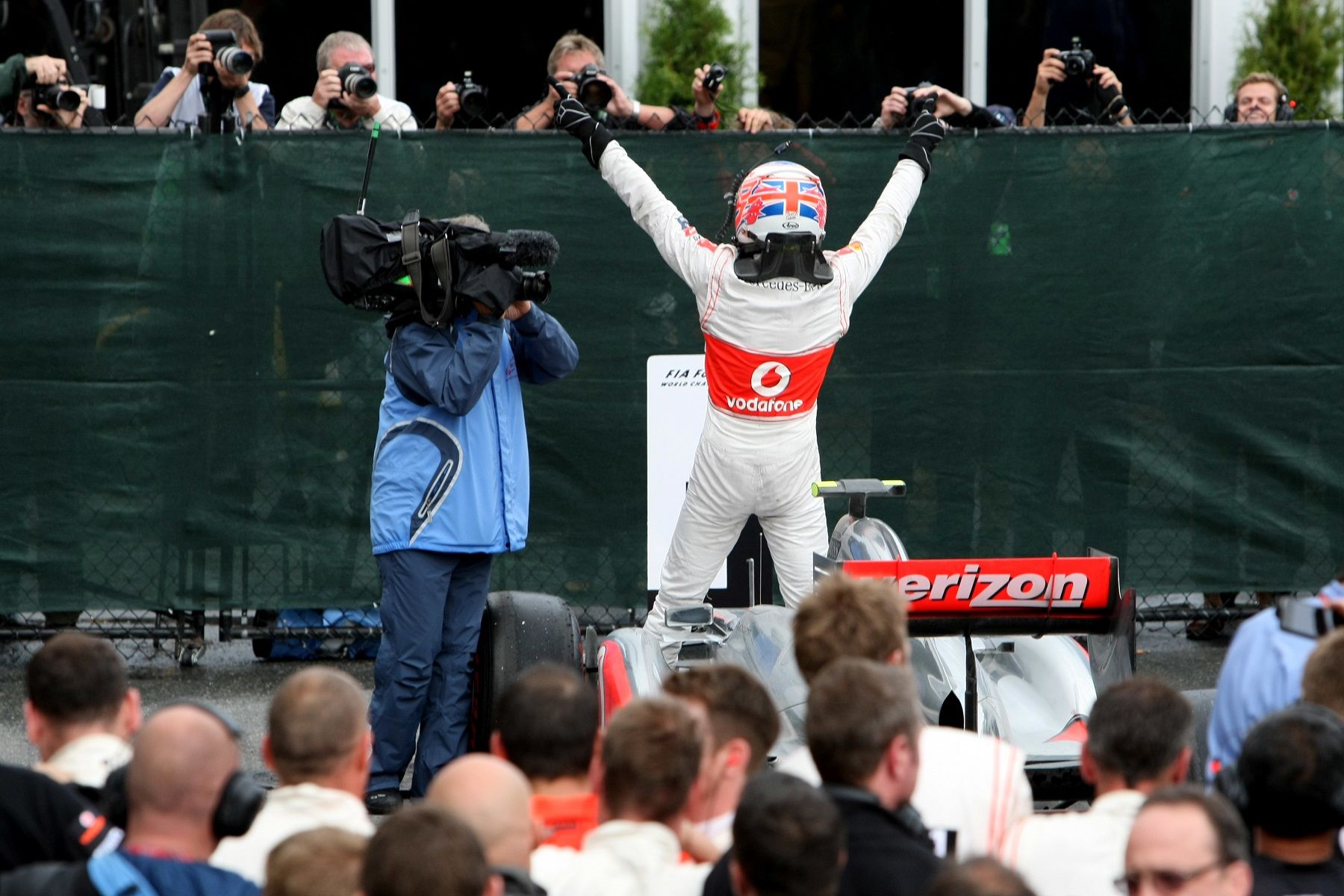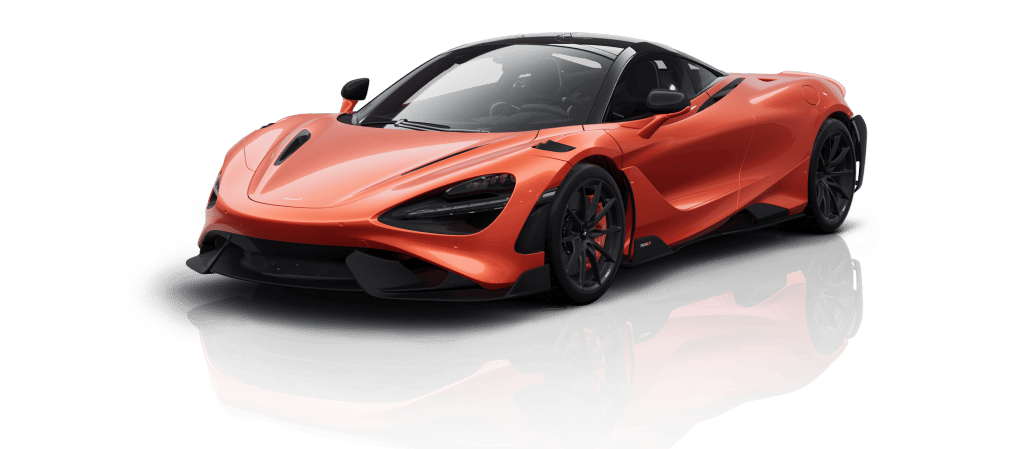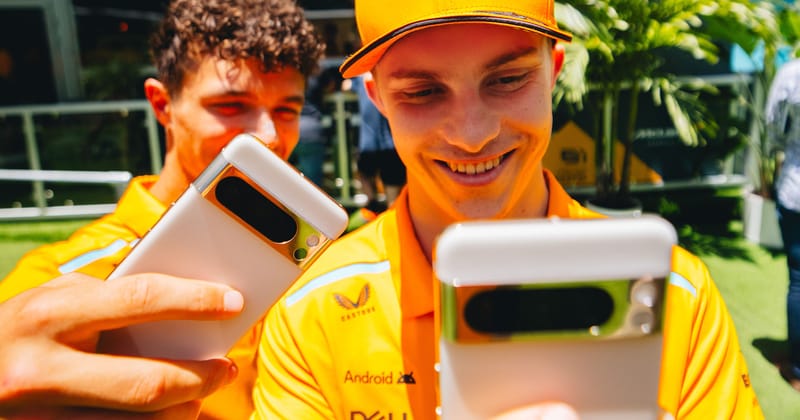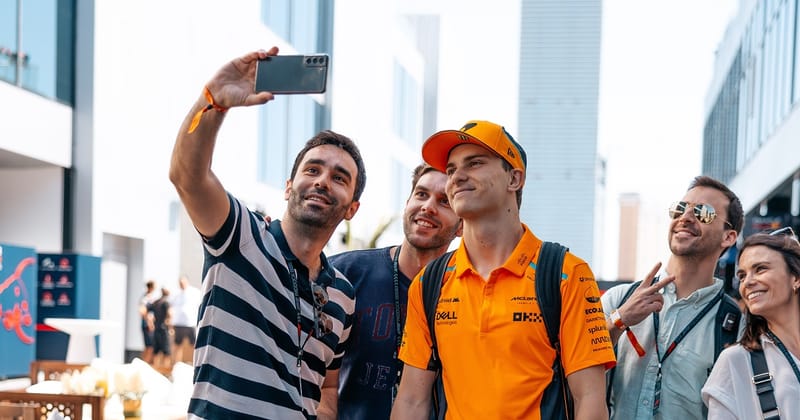
Was 2011 Jenson Button’s best season for McLAREN?
Lewis Hamilton has only been outscored by two of his teammates: this is the story of the first
Jenson Button is often asked the same two questions.
The first is: ‘What was your favourite era in Formula 1?’ To which he’d invariably talk fondly about the V10-era cars in 2004 and ’05, the final two years of those engine regulations, in which the cars were hugely powerful and fun to drive.
The second question is: ‘What was the best race of your F1 career?’ Most people would probably point to that chaotic, rain-soaked four-hour marathon in Montreal as Jenson’s finest performance. Jenson himself would nod politely, then point out that, while Canada was probably his defining win, he’d made too many mistakes that afternoon to warrant calling it his outright best.
Then he’d point to his race in Suzuka, an emotional victory following the tsunami that devastated Japan earlier in the year, as probably the best race of his long and illustrious Grand Prix career. And it’s not hard to see why: it was an extremely tough race in which he not only had to managing the gap to his rivals, but also skilfully juggle his fuel settings while seeing off the firm challenge of fellow World Champions Sebastian Vettel and Fernando Alonso.
It’s no coincidence that both victories occurred in 2011 – a superb season for Jenson, one in which he scored three memorable wins and outscored fellow McLaren driver Lewis Hamilton by 270 points to 227 – one of only two teammates to achieve such a feat.
With the help of those who lived it, we look back on that memorable year...

Jenson arrived at McLaren in 2010 as reigning World Champion after his successful Brawn GP season, and yet many observers assumed that it was not going to be easy to join a team where Hamilton was already well established.
He showed from the off that he meant business by winning twice in his first four races for the team, proving beyond all doubt that he was the right man for the job.
“Previously we’d had Heikki Kovalainen partnered with Lewis,” recalls Tim Goss, then Director of Engineering for McLaren. “And that was quite a good partnership, because Heikki pushed Lewis in Qualifying, but was rarely quite as quick in the race, so he never took points off Lewis. Some of us were a bit disappointed to see Heikki go, but once we realised we’d signed Jenson, there was real excitement about it. We knew he was a great driver.
“A lot of the pundits believed that it was a mistake, and he was going to be dominated by Lewis, but he proved them all wrong. Right from the start it was quite clear that he could mix it with the best, and it actually did masses for his reputation. Up until that point people had put him down as lucky to be in the Brawn, a car that was quick. When he arrived at McLaren, he proved that he was one of the greatest drivers out there.”
After his flying start to 2010, Jenson found life tougher as the season went on, as his team mate was much more comfortable with the car.
“In his first year, Jenson’s first few races in the team were very good,” says his Performance Engineer Tom Stallard. “Then we had a bit of a dry spell where we didn’t win as much as we felt we should. The 2010 car was all front end, which suited Lewis very well.”

The year of blowing hard
This was the era of blown diffusers, and getting it right was something of a dart art. After a false start with the original concept of the 2011 car, the team had a major re-think, and by the first race in Australia, the MP4-26 was flying.
“We pushed the boat out a bit,” says Goss. “I think we realised there was performance in blown diffusers, and we’d been very ambitious in what we’d been attempting to do on that car. In fact, we were too ambitious. So, through winter testing we were chasing after a lot of performance.
“It was there, but we’d bitten off more than we could chew, and actually, more than was physically possible. In winter testing, we looked quite uncompetitive, and through the period to the first race, we abandoned what we were doing on the exhaust system and adopted something that was a bit simpler, and similar to Red Bull’s solution.
“It transformed the back end, and from that moment, we knew we had a quick car. We hadn’t tested at the track, just run it in the wind tunnel, and there was a lot of apprehension about whether it would deliver at the track… but from the moment the car rolled out in Australia, Jenson and Lewis knew they had a really competitive car. That changes the whole momentum and feeling at the team.”
Tom adds: “That car had a lot of exhaust blowing and that gave it a lot of lateral support, which is something that Jenson likes – he likes a car that’s stable at the rear. The car performance came to him a little. These things don’t always happen by accident, so some of that was the fact that he’d been in the team long enough, and he was starting to have more of an influence in terms of what we were looking for from the car.
“Jenson’s feedback has always been very specific, very direct and very accurate. Perhaps Lewis was better at getting more out of a wider range of cars, whereas Jenson is very clear that if the rear of the car is limited, it costs him performance.”

The season kicks off
The first race in Australia proved disappointing for Jenson. After qualifying fourth, he lost time stuck behind Felipe Massa’s Ferrari and finished sixth. However, next time out in Malaysia, he took an encouraging second place: “We had a very good final stint,” says Tom. “I think he overtook Lewis. Jenson got on very well with the harder tyres.”
In Shanghai, Jenson qualified on the front row, alongside Sebastian Vettel. He led early on, but ultimately finished fourth after a mistake in his pit stop. Jenson continued to log points with sixth in Turkey and then third in Spain.
Then came Monaco, where he’d won with Brawn. A good strategy meant that in the closing laps, he was third behind Vettel and Alonso, but on much fresher tyres. However, he was robbed of being able to take advantage as a Red Flag caused by Vitaly Petrov gave everyone the chance to restart on fresh rubber.
“It’s a real shame that the race didn’t pan out until the end,” says Tom. “It would have been fascinating to see whether Vettel could have hung on. We still feel he couldn’t have, obviously, but as soon as the flag came out it was game over.”

A four-hour epic
Next stop was Montreal, a race that will forever be remembered as one of the most spectacular of Jenson’s career. The race had everything – rain, safety cars, a Red Flag, and a collision with Lewis.
“It was probably his most memorable race, but I don’t think it was his best performance,” says Tom. “Those conditions were perfect for him, and our tyre performance was very strong in those conditions as well. It was a mixed bag, I suppose. He made some mistakes but had moments of brilliance.
“As a whole weekend, I think he had better races during his time at McLaren, but in terms of how memorable it was, Canada was pretty extraordinary. There was a collision with Lewis, and a collision with Alonso that got us a drive through penalty.”
This moment. 🤩 @JensonButton crossing the line in Canada to take one of the great @F1 victories. 🏆#OnThisDay in 2011.
— McLaren (@McLarenF1) June 12, 2024
pic.twitter.com/29buDYLfca
“I remember supporting that one at the factory,” says Goss. “Things weren’t going well, we were in last place and the race was suspended. I remember sitting there, with it getting very, very late into the evening, and thinking ‘let’s get this over with’. We’re in last place, one driver has dropped out, and there’s nothing to hope for! It just shows that you should never give up.
“Once he got going, we realised pretty soon that he was outperforming everybody else. None of us dared think that he was going to win the race, but as it progressed you began to see that there was a chance. The way he drove those last five or six laps, overtaking Schumacher and Webber, and then chasing down Vettel on the final lap and pushing him into a mistake, was fantastic.”

Pushing on with the season
By now, Jenson was lying second in the World Championship, albeit some way behind leader Vettel. After a frustrating sixth place, Jenson went to Silverstone in an optimistic mood, but his home race brought disappointment, and he retired after leaving the pits with a loose wheel.
“The Silverstone one was a team problem rather than a driver problem,” says Tom. “It was a real shame, because that was probably his best opportunity to get on the podium at home. It was a cross-threaded wheel, which we knew straight away as the car left the pits, but it was too late to stop him.”
With no points that weekend, he tumbled back to fifth in the championship, and next time out at the Nurburgring, he retired with a hydraulics problem, losing further ground to his rivals. Then came Hungary, where once again, wet weather played to his strengths.
“There was a moment in that race when he was behind Lewis, and it started to spot with rain. We called them both in to pit for Inters,” says Tom. “Jenson knew it was a double shuffle, and just before the pit entry we said to him, ‘Stay out, stay out.’ He came back on the radio and said ‘I’m staying out anyway.’ He hadn’t ever confirmed that he was coming in. Lewis pitted, put the inter on, and it lasted two laps! That was another example of how Jenson had a sixth sense for the weather.”
Goss agrees: “Hungary was an example of the ways in which Jenson could read a race very well.”
“Jenson had a sixth sense for the weather”
Tom Stallard
Jenson Button's Performance Engineer
There was more rain during Qualifying at Spa, but due to a mix-up, Jenson backed off right at the end of Q2 when the track was getting faster and didn’t make it to Q3. From 13th on the grid he did a great job in the race to secure third place, which promoted him to fourth in the Championship.
He carried over his good form to Monza, making the podium again with a solid second place, thanks to a brilliant performance.
“He drove fantastically in that race,” recalled Tom. “There was one lap when he passed Lewis and Michael Schumacher on the same lap – Lewis got stuck behind Michael, Jenson caught them up, and drove past both of them!”

Japanese glory
In Singapore, Jenson chased down leader Vettel in the closing laps, and although there wasn’t ever a chance to pass, this moved him back up to second in the Championship.
What follow was, arguably, his best performance for McLaren, as he logged a third win of the season in Suzuka.
“That weekend, he was fastest in every session except Qualifying,” says Tom. “He was nine milliseconds off Pole! That was one of the weekends that I look back on and really feel that we got everything right. In the race, he drove really well. The car was quite light on fuel, so he was doing a lot of fuel saving towards the end of the race, and he began struggling with the temperatures and everything.
“When he crossed the finish line it became clear there was no fuel in the car for the in-lap, so he just parked it at the pit exit. He had to wedge the steering wheel under the wheel to stop it rolling down the hill! Japan is a bit of a second home so for him, that was a very emotional victory.”
The next run of races saw a fourth in Korea, a strong second in India, and third in Abu Dhabi, where an intermittent KERS issue made life difficult. Heading into the finale in Brazil, Jenson was 10 points clear of third place Alonso and determined to hang on to second in the World Championship.

Clinching runner-up spot
“In Brazil, we had a problem picking up fuel,” Tom explains. “We had plenty in the tank, but we had a problem picking it up. It became clear with about 10 laps to go that the car couldn’t use all of its fuel, so we told him to start saving fuel a lot.
“At the start of the final lap, we knew he had to finish well in order to maintain second in the Drivers’ Championship. At the start of the final lap, all of our sensors were telling us that we’d run out of fuel, because we couldn’t get any more out of the tank at all. The car eventually shut itself off 50 metres after the finish line. It made it all the way up the hill! There was plenty of fuel in it for the sample, we just couldn’t get it out of the tank into the fuel collector and then into the engine.”
Jenson comfortably secured second place in the World Championship, beating Red Bull’s Mark Webber in a season where his teammate Vettel proved dominant.
“He actually beat Vettel in the second half of the year, if I remember,” says Tom. “When Jenson joined, people thought he would struggle against Lewis, but as that season went on, he became more and more confident. If Lewis out qualified him, he was confident that he would get past Lewis in the races.”
“He kept a cool head,” says Goss. “Lewis picked up loads of penalties. He was still quick, but he leaked away too many points. Whereas, Jenson always delivered - he was putting in the podiums race after race. He was always there. Clearly the car was right for him, and he got the most out of it through performance and professionalism.”
Related articles

How Button won the 2011 Canadian Grand Prix

Revisiting Button's Spa pole

F1's ultimate rivalry: McLaren and Ferrari

When Mika Häkkinen out-qualified Ayrton Senna on his McLaren debut

Frenemies: When your rivals become your heroes

Close-run things: McLaren's closest championship battles





